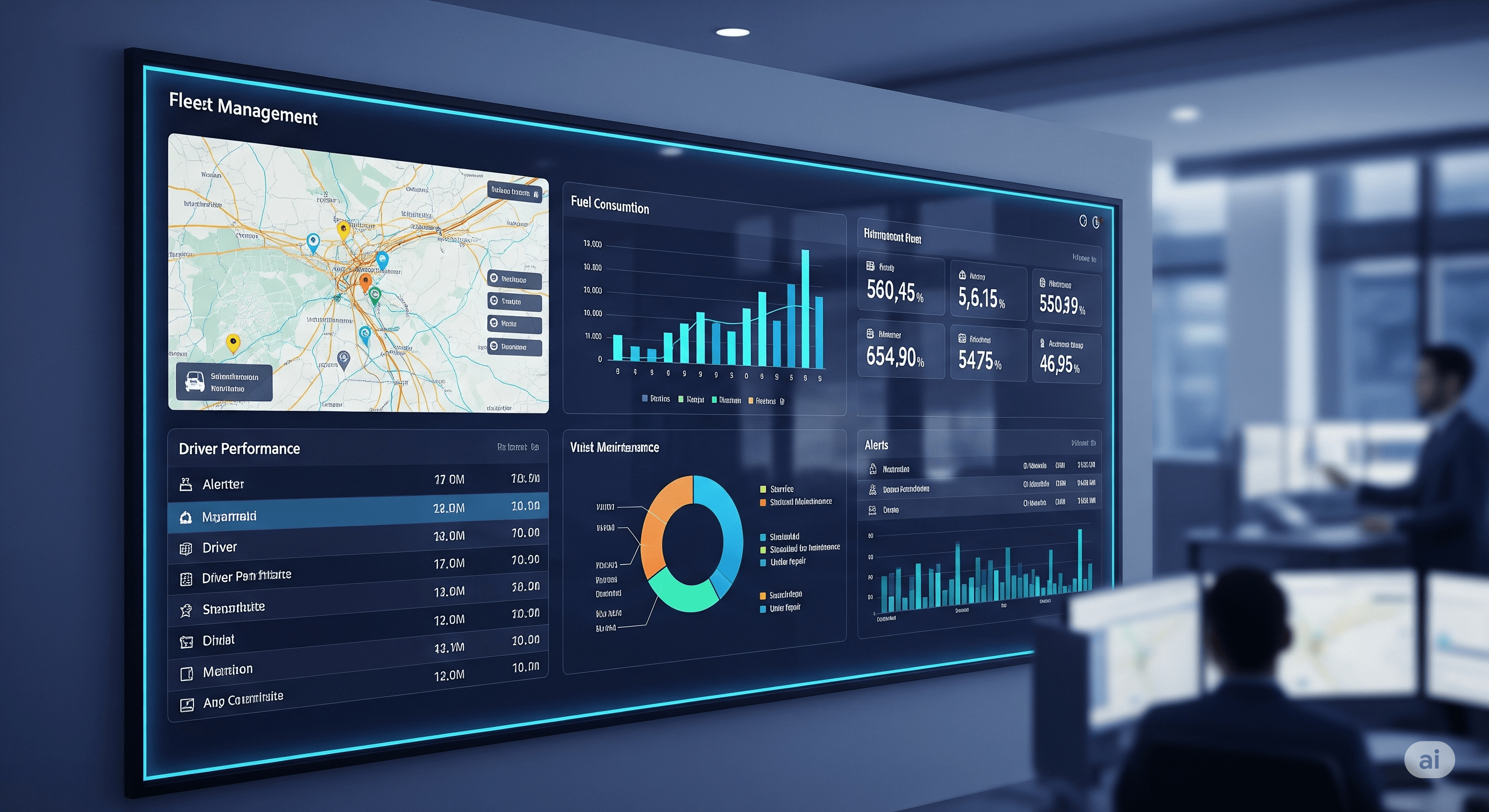Case Study: Fleet Management & Logistics
May 15, 2024
For companies with a fleet of vehicles, whether for delivery, service, or transport, real-time visibility is key to efficiency, security, and customer satisfaction. Using GPS trackers that communicate via MQTT, a logistics manager can use ioCtrlMQ to build a powerful, live command center for their entire fleet.

The Challenge
A local delivery company with a fleet of 20 vans needs to track the real-time location of its vehicles, monitor their fuel levels, and see the status of their current delivery tasks. The dispatcher needs a single screen to understand where everyone is, identify potential delays, and efficiently assign new pickups to the nearest available driver.
The Solution with ioCtrlMQ
Each delivery van is equipped with a small IoT device containing a GPS module and a cellular modem. This device reads data from the vehicle's CAN bus to get fuel level and engine status. It publishes this information every 30 seconds to an MQTT broker.
The MQTT topics are structured hierarchically:
fleet/van-01/location(Payload:{"lat": 34.0522, "lng": -118.2437})fleet/van-01/fuel_level(Payload:75)fleet/van-01/status(Payload:en-route)
An ioCtrlMQ dashboard is configured to visualize this fleet data:
- Map Location Widget: This is the centerpiece of the dashboard. A Map Location widget is configured to subscribe to all vehicle location topics using a wildcard (
fleet/+/location). Each van appears as a distinct, colored marker on the map. Clicking a marker can show a popup with the van's ID. - Multi-Gauge Panel: A Multi-Gauge widget displays the fuel level for each van. This allows the dispatcher to see at a glance if any drivers need to be routed to a gas station, preventing them from running out of fuel during a delivery. Alerts are set for low fuel levels.
- Table Widget: A Table widget subscribes to the
fleet/+/statustopic. It displays a live log of the most recent status updates from all vehicles (e.g., "en-route", "at-delivery", "available"), providing a quick summary of fleet activity. - Text Displays: A few Text Display widgets show key summary statistics, such as the number of "available" versus "en-route" vehicles.
The Outcome
The dispatcher now has a complete, real-time overview of the entire fleet on one screen. When a new pickup request comes in, they can instantly see the closest available driver on the Map and dispatch them, improving response time. The Multi-Gauge Panel for fuel prevents delays caused by empty tanks. The ability to see all vehicle locations simultaneously also acts as a security feature, allowing the company to quickly identify if a van deviates from its expected route.